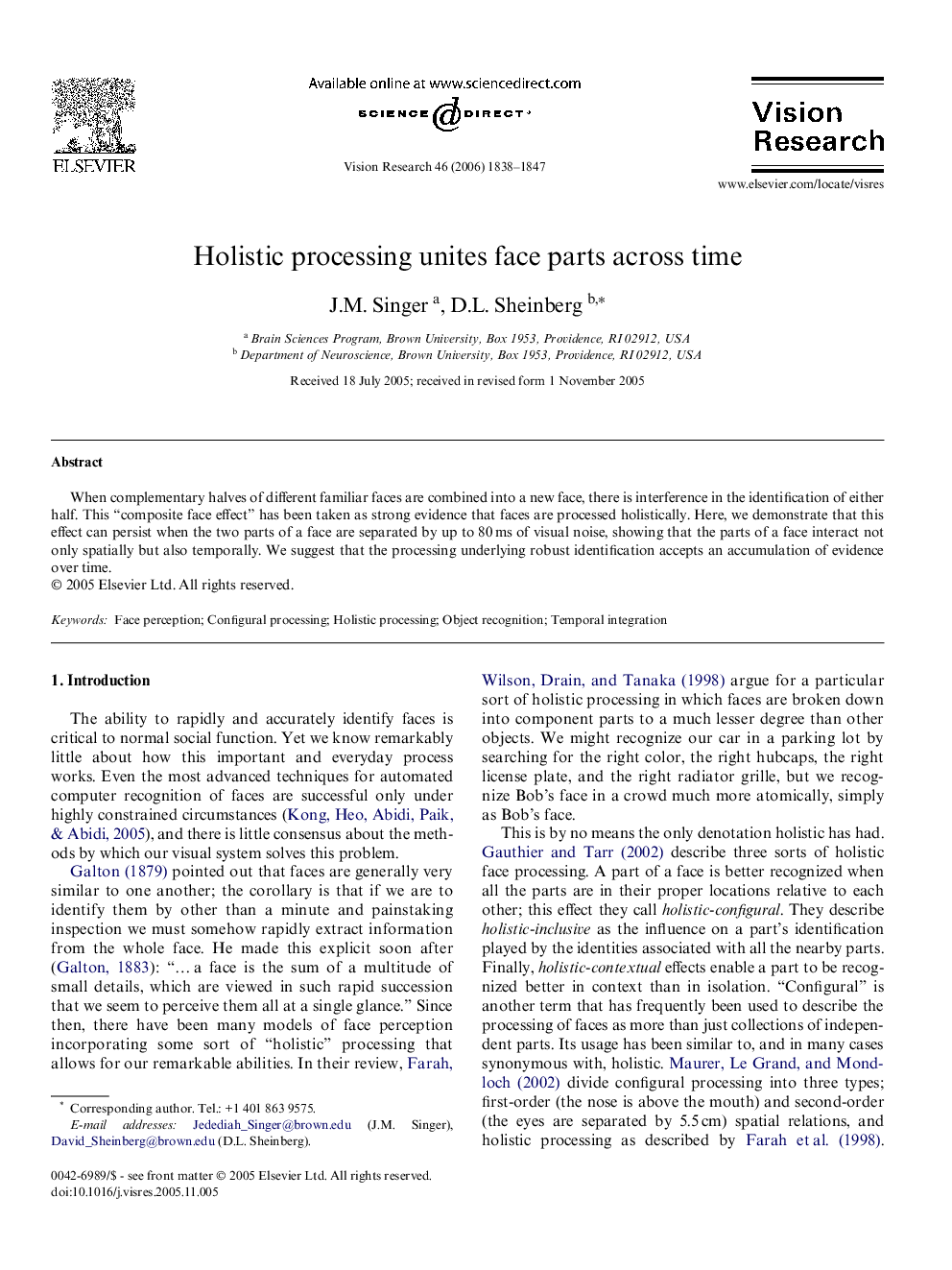| Article ID | Journal | Published Year | Pages | File Type |
|---|---|---|---|---|
| 4036731 | Vision Research | 2006 | 10 Pages |
Abstract
When complementary halves of different familiar faces are combined into a new face, there is interference in the identification of either half. This “composite face effect” has been taken as strong evidence that faces are processed holistically. Here, we demonstrate that this effect can persist when the two parts of a face are separated by up to 80 ms of visual noise, showing that the parts of a face interact not only spatially but also temporally. We suggest that the processing underlying robust identification accepts an accumulation of evidence over time.
Keywords
Related Topics
Life Sciences
Neuroscience
Sensory Systems
Authors
J.M. Singer, D.L. Sheinberg,
